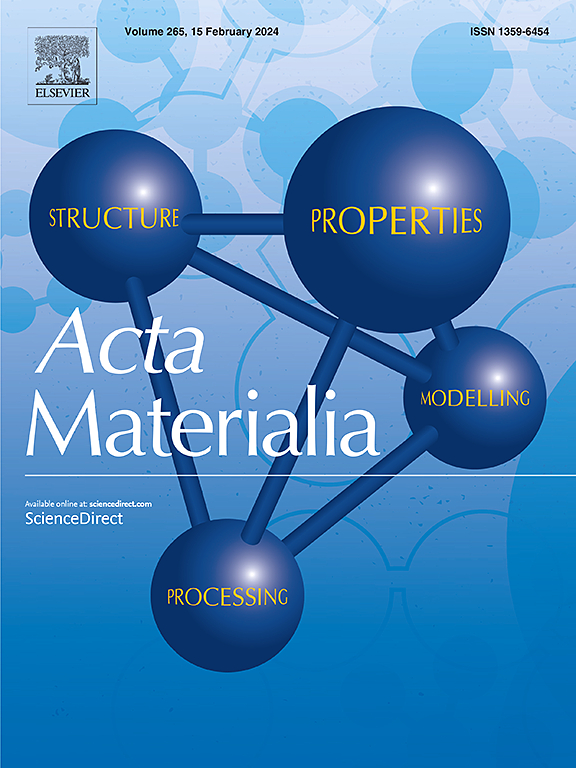Micro-alloying-driven transformation mechanisms of T1p to T1 in Al-Cu-Li-Mg-Ag alloys
IF 9.3
1区 材料科学
Q1 MATERIALS SCIENCE, MULTIDISCIPLINARY
引用次数: 0
Abstract
This study presents an atomistic experimental and theoretical investigation into the different stages of evolution from the early T1p phase to fully matured T1 in an Al-Cu-Li-Mg-Ag alloy, with the central aim of clarifying the role of the micro-alloying elements Mg and Ag in the T1p → T1 transformation. In addition to the heterogeneous nucleation of the T1 precipitate on pre-existing dislocations, the present work provides direct experimental support for homogeneous T1p nucleation, with transformation into T1 proceeding via a distinct pathway involving nucleation of dislocation loops or antiparallel pairs within T1p, independent of pre-existing dislocations. Contrasting earlier conclusions, the T1p → T1 transformation is found to initiate with an atomic rearrangement within the T1p Al-Cu layers into Kagomé nets (“Al-Cu layer reorientation”), with Shockley partial dislocations (SPDs) activation and passage following only after this point. This structural transformation order is explained by the Kagomé nets introducing structural geometries promoting the SPD activation. Li and Mg at the interface are identified as primary contributors to the SPD passage-induced transformation driving force. Ag complements this process indirectly by facilitating Li incorporation. The final stages of transformation are diffusion-limited, with Cu and Li incorporation representing the slowest step. These results substantiate atomistically the role of the micro-alloying elements Mg and Ag in homogeneous T1p nucleation and transformation.


Al-Cu-Li-Mg-Ag合金中T1p向T1的微合金化转变机制
本研究对Al-Cu-Li-Mg-Ag合金从早期T1p相到完全成熟T1的不同演化阶段进行了原子实验和理论研究,旨在阐明微量合金元素Mg和Ag在T1p → T1相变中的作用。除了T1沉淀在先前的位错上的非均相形核外,本研究还为T1p的均相形核提供了直接的实验支持,即T1的转变是通过一个独特的途径进行的,该途径涉及T1p内的位错环或反平行对的形核,与先前的位错无关。与先前的结论相比,发现T1p → T1转变始于T1p Al-Cu层内的原子重排成kagom网(“Al-Cu层重定向”),在此之后才有肖克利部分位错(SPDs)激活和通过。kagom网介绍了促进SPD激活的结构几何形状,解释了这种结构转换顺序。界面处的Li和Mg是SPD通道诱导转化驱动力的主要贡献者。Ag通过促进Li合并间接地补充了这一过程。转化的最后阶段是扩散受限的阶段,铜和锂的结合是最慢的步骤。这些结果从原子上证实了微量合金元素Mg和Ag在T1p均相形核转变中的作用。
本文章由计算机程序翻译,如有差异,请以英文原文为准。
求助全文
约1分钟内获得全文
求助全文
来源期刊

Acta Materialia
工程技术-材料科学:综合
CiteScore
16.10
自引率
8.50%
发文量
801
审稿时长
53 days
期刊介绍:
Acta Materialia serves as a platform for publishing full-length, original papers and commissioned overviews that contribute to a profound understanding of the correlation between the processing, structure, and properties of inorganic materials. The journal seeks papers with high impact potential or those that significantly propel the field forward. The scope includes the atomic and molecular arrangements, chemical and electronic structures, and microstructure of materials, focusing on their mechanical or functional behavior across all length scales, including nanostructures.
 求助内容:
求助内容: 应助结果提醒方式:
应助结果提醒方式:


